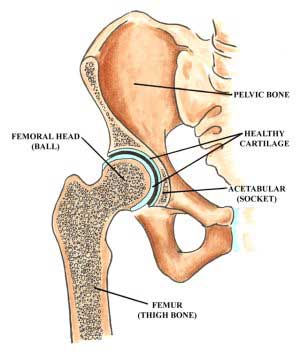Introduction to Hip Surgery
The hip joint is a ball and socket joint attaching the pelvis to the femur. It is what is known as a synovial joint and is made up of the acetabulum (cup or socket), which is part of the pelvis and the head of the femur (ball), which is at the top of the thigh bone. It is prone to a number of conditions that can be managed with appropriate treatments including surgery where required.
In all conditions of the hip, the type of surgery, the timing of surgery and the type of implant and the bearing surfaces used often affects the result and early and late outcomes. The results of such surgery depend upon a variety of factors, which your surgeon should discuss with you.
 [/one_half_last]
[/one_half_last]
Arthritis
Arthritis of the hip is a common condition and maybe associated with the wear and tear process of ageing. Arthritis may also develop following trauma or as a result of problems with the hip at birth or congenital problems. Inflammatory arthritis such as Rheumatoid Arthritis is a generalised condition and this can affect the hip joint along with other joints and some organs of the body.
When the pain of an arthritic hip is sufficiently severe as to limit mobility and affect daily activities and cannot managed by measures such as analgesia and physical therapy, surgery may need to be considered.
Fractures
The risk of fractures around the hip is not an uncommon problem associated with ageing or with significant trauma in the younger active patient. The correct and accurate treatment is necessary for a good outcome following such injuries.
The specific diagnosis and appropriate treatment for individual patients is helpful in achieving the desired result in returning the patient promptly back to normal mobility.
Testimonial
We are especially indebted to you because it was a particularly difficult operation … I remember vividly our delight when you decided an operation was possible … was nursed to a speedy recovery.
Relatives of Mr T, Woldingham